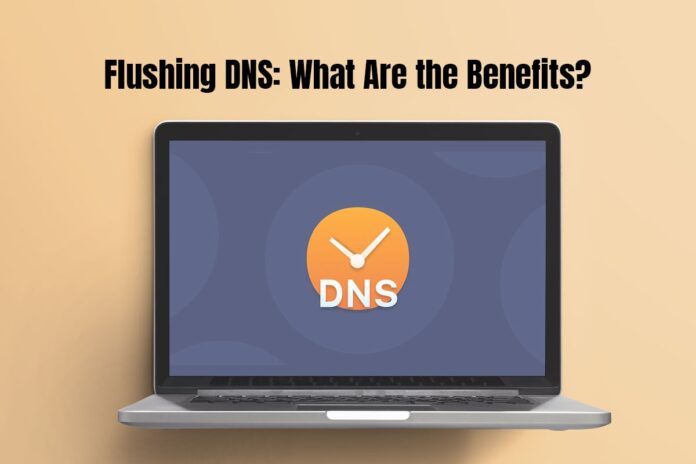All the IP addresses of your visited websites are stored in the DNS cache. Since the browser can find the information quickly, you can load the sites faster and establish connections. But if the site owners have updated their websites, you may have trouble opening them with the outdated information stored in the DNS cache. You can improve the browsing experience by flushing DNS, and this will solve the problem of not being able to access a website.
If you are a Mac user, you can flush DNS on Mac using a cleaning software like CleanMyMac X. Or you can manually flush DNS by clicking on the Apple menu > About This Mac and the rest of the steps will depend on the macOS version you are running. Assuming you are running macOS Big Sur or later, open Terminal > enter the command sudo dsacheutil -flushcache; sudo killall -HUP mDNSResponder > enter your system’s password and press the Enter key. Keep scrolling to learn about DNS and the benefits of flushing the DNS cache.
What is DNS?
The DNS or Domain Name System is considered the phonebook of the web. All the information you access on the Internet is done through domain names. The browsers interact through IP addresses, and DNS translates domain names into IP addresses so that the web browsers can load the web resources.
Each system connected to the web has a unique IP address, and other machines use this address to find the device. Thanks to DNS servers, humans don’t need to memorize IP addresses.
READ ALSO:
Common Computer Issues and How to Fix Them
Easiest Ways To Double Productivity
What Companies Are in the Consumer Service Field?
What is DNS Caching?
The primary objective of caching is to store data temporarily in a location, which results in improving the performance and reliability of data requests.
DNS caching means storing data closer to the requesting client. Thanks to this, DNS queries are quickly resolved, and additional queries are avoided. Hence, you can enjoy enhanced load times and reduced CPU or bandwidth consumption.
DNS is cached in multiple locations, such as:
- Browser DNS caching
All modern browsers cache DNS by default for a specific time. The purpose is to load websites faster with as fewer processing steps as possible. So, when you enter the domain name, the browser checks the cache and makes the correct request to an IP address.
Whenever there’s a request made for a DNS record, the first location checked is the browser cache.
- OS level DNS caching
The OS level DNS resolver is the last local stop before a DNS inquiry leaves your system. This DNS client or stub resolver handles this query inside the OS.
When an application sends a request to the stub resolver, it checks its own cache to find out if there are any records. If there isn’t any, then it sends a DNS query outside the local network to a DNS recursive revolver, and this is inside the ISP.
When the recursive resolver inside the ISP receives the DNS query, it checks to see whether the requested host-to-IP-address translation is stored inside the local persistence layer.
Flushing DNS: What are the Benefits?
The Different Benefits of Flushing the DNS Cache are Mentioned Below:
- Bad connections are cleared
The issue is there’s no separate listing for bad IP responses. All the bad and good connections are lumped together. So, if you have the wrong IP address stored in the cache, flushing the DNS cache is the solution to remove the bad entry so that your web browser can get the correct IP entry.
Your DNS may have the incorrect entry for a website due to viruses or malware. Or it might be an error with the website you are attempting to visit or your ISP. Sometimes, websites change IP addresses. Hence, when you try to visit it the second time, you see error messages.
- Improved security
The DNS cache is not hidden. If there’s anybody with access to your computer, they can see the DNS cache and find out the websites you have visited. Hence, it is essential to clear your cache. This will ensure nobody can see your browsing activities.
- Old DNS data is removed
Did you think there’s a single DNS provider? Think again! Google offers a resolution and DNS cache service, and another provides Open DNS.
If you have changed the DNS, but your cache is full, the web browser will pull from all the stored cache. It will not refer to the new service. So, if you flush the DNS cache, it starts pulling from the new DNS service whenever you visit the website.
The Bottom Line
DNS caching is essentially trying to reduce the time taking to load websites and provide you with a seamless browsing experience. However, it puts you at risk if you are sharing your computer with someone else. They can find out the websites you have visited through DNS caching. Also, if IP addresses are changed, the DNS cache causes problems opening websites by pulling information from the stored data.
Hence, add flushing DNS cache to your to-do list.





